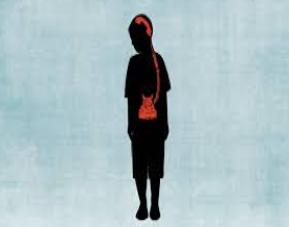Paradigm shift is an overused term. Properly, it refers to a radical change of perspective on a topic,
范式转换是一个被过度使用的术语。准确的是,它指的是对一个话题观点的彻底改变,
such as the move from the physics of Newton to the physics of Einstein, or the introduction of plate tectonics into geology.
比如从牛顿物理学转变到爱因斯坦物理学,或是将板块构造学引入到地质学。
Such things are rare. Something which history may come to regard as a true paradigm shift does,
这种转变很少见。但历史上可能认为属于真正的范式转换的事情
however, seem to be going on at the moment in medicine.
似乎此刻正发生在医学领域。
This is a recognition that the zillions of apparently non-pathogenic bacteria on and in human bodies,
这是一种认识,即人体和体内有着无数非致病菌,
hitherto largely ignored, are actually important for people's health.
迄今为止这一点被很大程度的忽略了,这些病菌对人类健康非常重要。
They may even help to explain the development of some mysterious conditions.
它们甚至可能有助于解释一些神秘疾病的形成。
One such condition is autism—these days often called autism-spectrum disorder (ASD).
其中之一就是孤独症—如今经常被称为自闭症谱系障碍(ASD)。
ASD is characterised by repetitive, stereotypical and often restricted behaviour such as head-nodding,
ASD的特征是重复的、刻板的以及经常性的限制行为,如点头,
and by the difficulties those with it have in reading the emotions of, and communicating with, other people.
患者有无法读懂别人情绪以及和他人沟通的困难。
These symptoms are noticeable in children from the age of two onwards. Currently, in America, about one child in 59 is diagnosed with ASD.
这些症状在两岁以上的儿童中很明显。目前,在美国约每59个孩子中就有一个被诊断为ASD。

肠道、大脑和孤独症(1).jpg
What causes ASD has baffled psychiatrists and neurologists
自20世纪中期,汉斯·阿斯伯格和利奥·坎纳首次对这种综合症状进行描述以来,
since the syndrome was first described, in the mid-20th century, by Hans Asperger and Leo Kanner.
ASD的病因就一直困扰着精神病学家和神经学家。
But the evidence is pointing towards the bacteria of the gut.
但证据正指向肠道细菌。
That suggestion has been reinforced by two recently published studies—one on human beings and one on laboratory rodents.
最近发表的两项研究进一步证实了这一观点—一项是针对人类,另一项是针对啮齿类实验动物。
The human study, the latest results of which came out a few weeks ago in Scientific Reports,
人类研究,其最新结果几周前发表在《科学报告》上
is being conducted by Rosa Krajmalnik-Brown of Arizona State University and her associates.
由亚利桑那州立大学的Rosa Krajmalnik-Brown及其合作人共同进行。
It was prompted by earlier work in which Dr Krajmalnik-Brown and James Adams, a colleague at Arizona State,
该研究由Krajmalnik-Brown和一位亚利桑那州同事James Adams的早期作品促成,
sequenced the DNA of gut bacteria from 20 autistic children to discover which species were present.
研究将20个孤独症孩子的肠道细菌DNA进行排序以发现其呈现出的是哪些种类。
They found that the children in their sample were missing hundreds of the thousand-plus bacterial species
他们发现样本儿童的千种细菌种类中缺失了有数百种
that colonise a "neurotypical" person's intestine. One notable absence was Prevotella.
千种细菌种类在“典型发育的”人体内进行殖民。一个值得注意的缺失是普雷沃氏菌属。
This bug, which makes its living by fermenting otherwise-indigestible carbohydrate polymers in dietary fibre,
这种细菌通过在膳食纤维中发酵其他不能消化的碳水化合物聚合物为生,
is abundant in the alimentary canals of farmers and hunter-gatherers in places like Africa,
非洲等地的农民和狩猎采集者的消化道中有大量的普氏菌,
rare in western Europeans and Americans, and nearly nonexistent in children with ASD
在西欧人和美国人消化道很少,在ASD儿童患者体内几乎不存在。
Their discovery led Dr Krajmalnik Brown and Dr Adams to the idea that restoring the missing bacteria might alleviate autism's symptoms.
他们的发现引导Krajmalnik Brown博士和Adams博士产生了一种想法:修复缺失的细菌或许可以减轻自闭症的症状。
Two years ago they tested a process called microbiota transfer therapy (MTT) on 18 autistic children aged between seven and 16.
两年前,他们对18名7到16岁的孤独症儿童患者进行了一种名为微生物群转移治疗(MTT)的测试。
Of their participants 15 were regarded, according to the Childhood Autism Rating Scale, as having "severe" autism.
其中15名参与者,根据《儿童孤独症评定量表》,被评定为重度自闭症。
MTT is a prolonged version of a process already used to treat infection by a bug called Clostridium difficile, which causes life-threatening diarrhoea.
已经有一种被用于治疗艰难梭菌感染(会引起致命的腹泻)的方法,而MTT是这种方法的延伸版。
It involves transplanting carefully prepared doses of faecal bacteria from a healthy individual to a patient.
这种方法包括将精心准备的粪便细菌从健康个体移植到病人体内。
The researchers gave the children, first, an oral antibiotic, a bowel cleanse and an oral antacid
研究人员首先给孩子们口服抗生素、肠道清洁和口服抗酸剂
(to ensure that microbes administered by mouth would survive their passage through the stomach).
(确保口服微生物能在通过胃的过程中能够存活)。
They followed this up with either an oral or a rectal dose of gut bacteria, and then, for seven to eight weeks, a daily antacid-assisted oral dose.
他们对用口服或直肠剂量的肠道细菌进行追踪,然后连续七到八周,每日服用抗酸剂辅助口服剂。
Ten weeks after treatment started the children's Prevotella levels had multiplied 712-fold.
治疗开始10周后,孩子们的普氏菌增加了712倍。
In addition, those of another species, Bifidobacterium, had quadrupled.
此外,另一种双歧杆菌增加了四倍。
Bifidobacterium is what is known as a "probiotic" organism—something that acts as a keystone species in the alimentary ecosystem,
双歧杆菌被称为益生菌生物—它们在食物生态系统中起关键作用,
keeping the mixture of gut bacteria healthy. Now, two years later, although levels of Prevotella have fallen back somewhat,
保持肠道细菌混合物的健康。如今,两年后,虽然普氏菌含量有所回落,
they are still 84 times higher than they were before the experiment started.
但仍比接受试验前高84倍。
Levels of Bifidobacterium, meanwhile, have gone up still further—being five times higher than they had been at the beginning of the study.
同时双歧杆菌的含量仍进一步提升—比研究之初高五倍。
This, says Dr Krajmalnik-Brown, suggests the children's guts have become healthy environments that can recruit beneficial microbes by themselves.
Krajmalnik-Brown表示这意味着孩子们的肠道环境变得健康,可以自己补充有益微生物。
Crucially, these changes in gut bacteria have translated into behavioural changes.
关键是这些肠道细菌的改变转化成了行为的变化。
Even 18 weeks after treatment started the children had begun showing reduced symptoms of autism.
自治疗开始18周后,孩子们孤独症症状开始减弱。
After two years, only three of them still rated as severe, while eight fell below the diagnostic cut-off point for ASD altogether.
两年后,其中仅有三人仍被评定为重度自闭症,8人完全低于ASD的诊断建议值。
These eight thus now count as neurotypical.
因此这8例被定为典型发育。
Exactly how gut bacteria might contribute to autism is a puzzle.
肠道细菌究竟是如何导致自闭症的仍是个谜。
But light has been shed on the matter by the second study,
但第二项研究为这个问题提供了线索,
published this week in Cell by a team led by Sarkis Mazmanian of the California Institute of Technology.
本周加州理工学院Sarkis Mazmanian领导的团队在《细胞》杂志发表了一项研究。
Dr Mazmanian and a group of colleagues that also included Dr Krajmalnik-Brown performed a type of MTT on mice.
Mazmanian博士及其同事(其中也包括Krajmalnik-Brown博士)对老鼠进行了一种MTT。
They collected bacteria from the faeces of both neurotypical and autistic people
他们收集了典型发育和孤独症人群粪便中的细菌
(who ranged in their symptoms from mild to severe) and transplanted these into hundreds of mice.
(他们的症状按轻微到重度排列)并将这些细菌移植到数百只老鼠体内。
They then interbred the recipient mice and studied the offspring of these crosses—
然后他们让受鼠杂交并研究它们的后代—
animals that had picked up the transplanted bacteria from their mothers at birth.
这些动物自出生后便从母亲体内遗传了移植细菌。
Dr Krajmalnik-Brown and Dr Adams are now recruiting volunteers for a large-scale trial of MTT for adults with autism, to see if they, too, can benefit.
目前Krajmalnik-Brown博士和Adams博士正在为MTT大范围成人孤独症试验招募志愿者,他们想知道这种方法是否也有益于成人。
The paradigm, it seems, really is shifting.
范式似乎真的正在转变。
来源:经济学人

参与评论